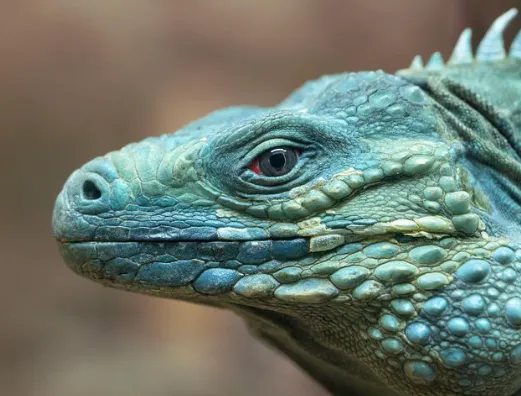
Table of Contents
Scientific Classification
- Kingdom: Animalia
- Phylum: Chordata
- Class: Reptilia
- Order: Squamata
- Family: Iguanidae
- Genus: Cyclura
- Species: C. lewisi
Quick Overview
The Blue Iguana (Cyclura lewisi), also known as the Grand Cayman Iguana, is a vibrantly colored lizard endemic to the Grand Cayman Island. With its distinct blue hue and casqued head, this species stands out not only for its beauty but also its status as one of the most endangered lizards.
Fast Facts
- Scientific Name: “Cyclura lewisi”
- Lifespan: Average lifespan of about 20-25 years, or 30 years in ideal conditions.
- Average Size: 4.5-5.2 feet
- Diet: Herbivorous
- Habitat: Dry forests and coastal areas of Grand Cayman
Did you know?
The Blue Iguana’s remarkable color isn’t merely aesthetic; it serves as camouflage, blending with the blue sea and sky when viewed from afar.
Appearance
Blue Iguanas exhibit a beautiful blue-green color that becomes more vibrant with age and during the breeding season. Their casque, a helmet-like structure atop their head, is particularly noticeable in males.
Size and Weight
Adult Blue Iguanas generally measure between 4.5 to 5.2 feet and can weigh up to 30 pounds. Males are typically larger than females.
Temperament and Behavior
These iguanas prefer solitude. They can show aggression towards other iguanas, especially during mating seasons, but they’re generally calm unless threatened.
Fun Fact:
Blue Iguanas possess the capability to regenerate a lost tail – a nifty defense against would-be predators.
Habitat and Distribution
Native to the Grand Cayman Island, they primarily inhabit dry forests, coastal regions, and rocky terrains. Conservation efforts have been leading to a gradual increase in their numbers in protected zones.
Care Guide
For potential Blue Iguana caretakers:
- Provide a spacious, secure enclosure with climbing opportunities.
- Ensure humidity levels of 50-70%.
- UVB lighting is imperative for calcium absorption and health.
- Offer a diverse plant-based diet.
- Regular veterinary checks are essential.
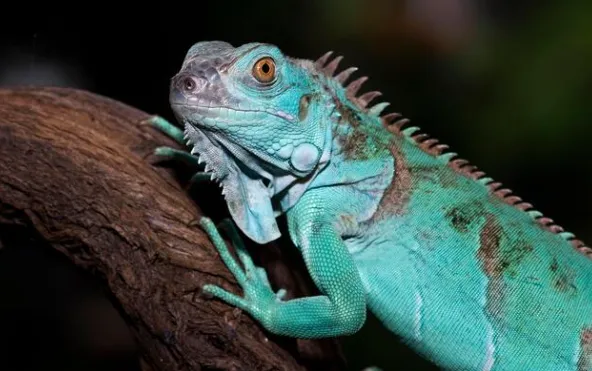
Diet and Nutrition
In their natural habitat, Blue Iguanas are predominantly herbivores, feeding on a mix of plants, fruits, and flowers. In captivity, they should be provided a diet rich in leafy greens, supplemented with vegetables and occasional fruits.
Health and Wellness
They might suffer from metabolic bone disease if not given proper UVB lighting. Staying hydrated is essential to prevent kidney complications.
Breeding
Blue Iguanas are oviparous. After mating, females can retain sperm and lay clutches of eggs. The number of eggs can vary, but they typically lay between 10-20 eggs, which are then buried in sandy or loamy soil. The incubation period can range, often lasting around 65-90 days depending on environmental conditions.
Conservation Status
Currently listed as Endangered, the Blue Iguana faces threats from habitat destruction, road incidents, and invasive species. Active conservation strategies are underway to protect them.
Fun Fact:
Blue Iguanas have a parietal eye (often called a ‘third eye’) atop their head. It doesn’t form images but can detect light and motion, alerting them to overhead threats.
Photo Gallery
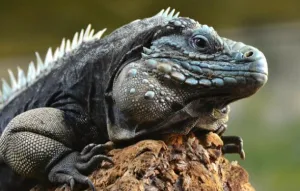
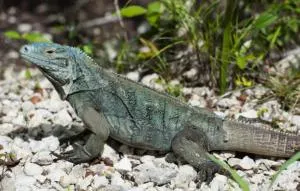
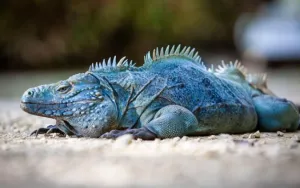
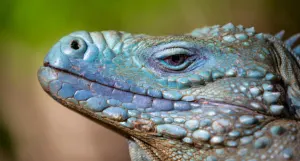
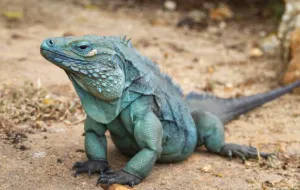
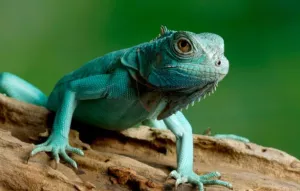
Check out the video below of Blue Iguana enjoying fresh salad:
Related Profiles
- Green Iguana
Share This Profile:
3 Amazing Facts About Blue Iguana
- Solar Baskers: These iguanas are known to bask extensively, harnessing the sun’s rays to aid digestion and produce vitamin D.
- Combat Ready: Males use their impressive casques during confrontations, often head-butting rivals.
- Nature’s Thermometer: Their ability to alter color isn’t solely for communication; it also helps regulate their temperature. They turn darker to absorb more sunlight or lighter to reflect it.
- Enchi Ball Python: A Unique and Stunning Morph of Python regius - March 27, 2025
- Emerald Tree Monitor: The Enigmatic Green Guardian of the Rainforest - March 26, 2025
- The Egyptian Cobra (Naja haje): A Fascinating Serpent - March 25, 2025
